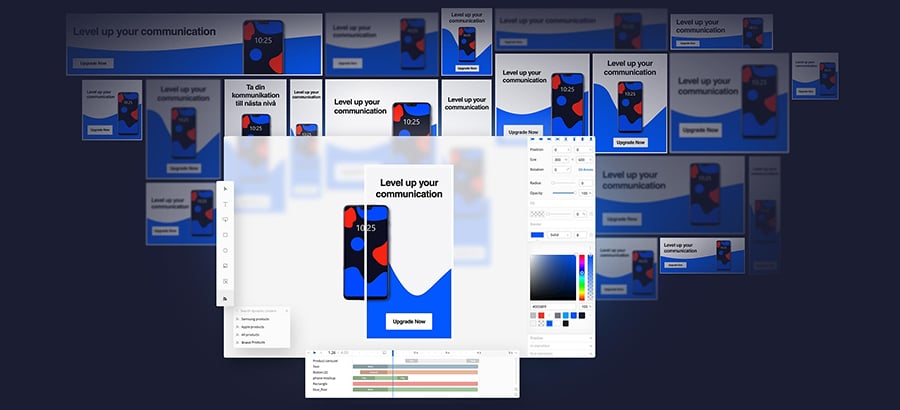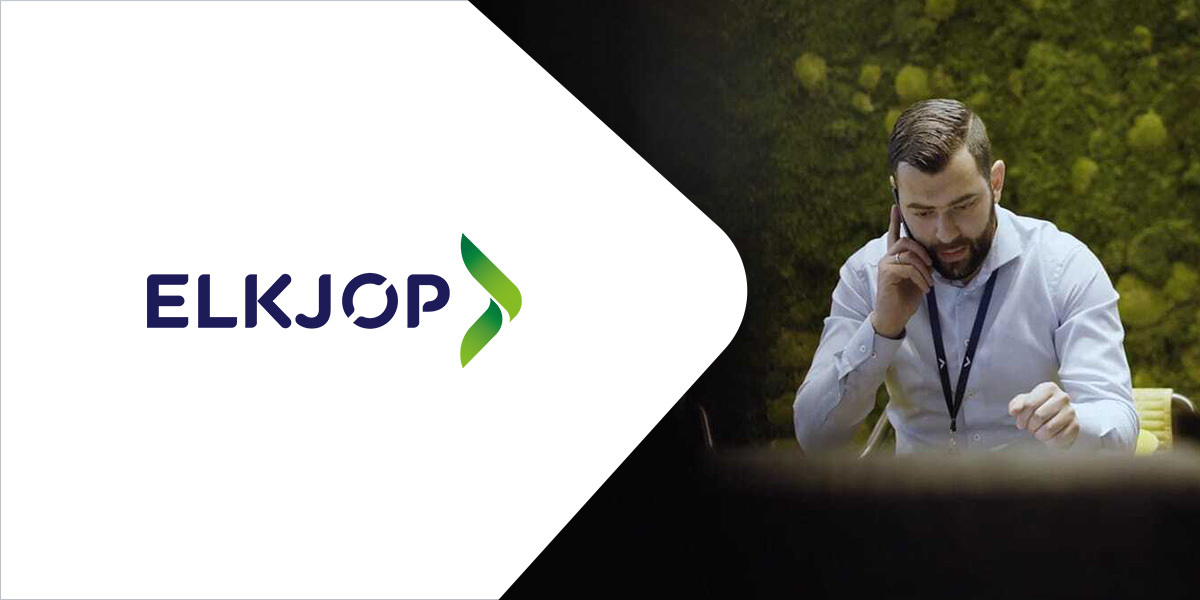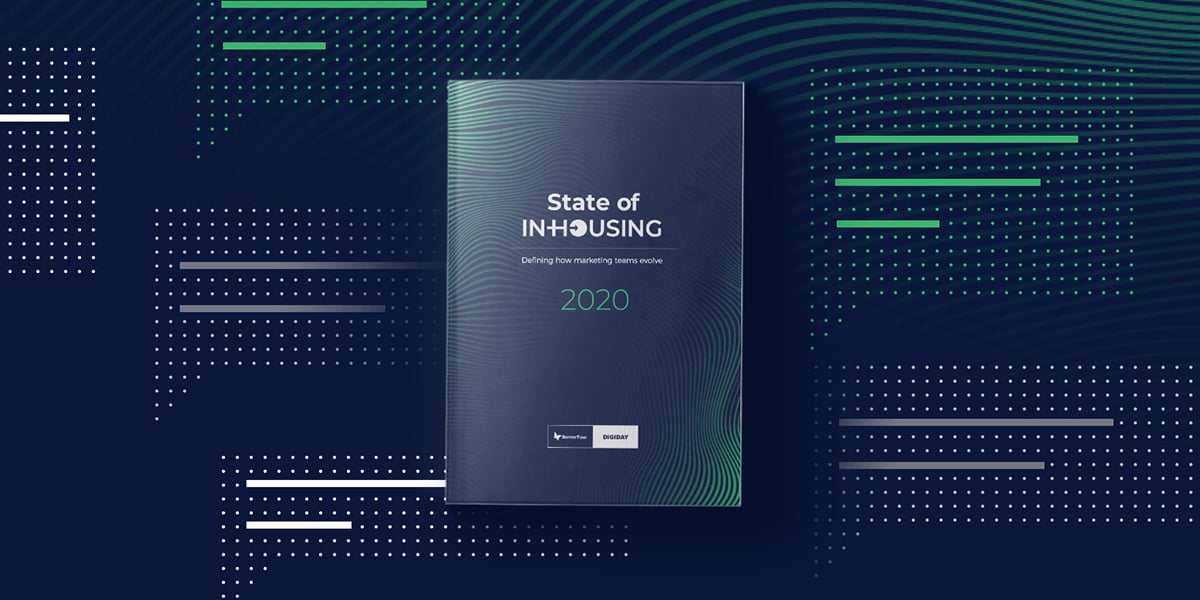
7 ways in-house marketing and martech save brands time, money, and resources
In-house marketing and martech is helping brands to cut costs and become ever more efficient. Which in testing times, is essential to remain competitive and reach business goals.
It’s a proven fact too: Bannerflow and Digiday’s State of in-housing 2020 report found that 58% of brands state positive ROI is a direct outcome of in-housing marketing functions. Yet, without the use of effective technology in-house marketing can be just as time consuming and difficult as traditional marketing models.
In this blog, we explore how combining in-house with the best technology, such as a creative management platform (CMP), saves brands time, money, and resources by:
- Cutting costs that frees up budget for impactful creativity
- Making workflows more efficient
- Enabling remote working via a single platform
- Meeting change through control of data and flexible martech
- Achieving marketing agility by making changes in real-time
- Gaining true transparency over data and creative functions
- Empowering teams to bring new skills in-house
1. Cutting costs that frees up budget for impactful creativity
One of the strongest reasons as to why brands are in-housing in 2020 is cost-saving. Indeed, as brands in-house their digital marketing, they are optimising spend in more and more efficient ways and refining budget according to what that moment in time calls for.
What’s more, there are additional benefits to reducing costs, such as increase in both ROI and ad performance – not to mention creativity!
Key stat: 38% of brands cite cost-saving as a key benefit of in-housing
Analysis:
For Getty Images, cost-saving through in-housing was not the main objective – but it was a welcome bonus. As Chief Marketing Officer, Gene Foca notes: “the end game was to raise the bar on our talent and performance and eliminate risk. We were able to do those things and eliminate external spend organically. It wasn’t a specific goal, though we found we could manage our needs in a more cost-effective manner with strong results.”
Practical advice
Interestingly, out of those questioned, 74% of brands – who have seen an increase in ROI since in-housing – note that levels of creativity have strengthened. For these brands, there is a direct correlation between greater creativity and positive ROI. But how?
More and more brands are investing in advertising technology and martech that is enabling them to do more in-house. What were previously the skills of agencies are now in-house competencies. For example, thanks to the development of creative management platforms, brands are now able to create agency-standard display advertising, in-house.
2. Making workflows more efficient
A major demand for brands is efficiency. Indeed, a higher level of productivity leads to more time to focus on other key areas of the digital marketing process, such as optimisation. By bringing martech and in-house talent together, brands are transforming workflows and reaching new highs in their productivity.
Key stat: 27% of brands say using technology within their in-house team has made them more efficient
Analysis
Marketers have an abundance of tools and technology available to gain efficiency and control over their digital marketing. In fact, only three percent of brands say a lack of appropriate ad tech tools is a barrier to in-housing! While 27 percent say using technology within their in-house team has made them more efficient.
For Migu Snäll, Art Director at If Creative Agency martech such as a CMP is very important to success. “Technology has helped us immensely. Achieving the levels of productivity we need via the old way of working would be extremely expensive. Especially if buying it in from an external company.”
Practical advice
Workflow tools have proved extremely useful for in-house brands, from slack to google docs. Indeed, cloud-based software, such as CMPs is enabling brands to work both globally and locally on advertising campaigns – across locations, all in the same platform!
A bonus of having collaboration between all team members take place in-platform, is that all processes are completely transparent. No files are sent – and all stakeholders involved. Meaning marketing teams can act quicker across different production workflows and be ever more efficient.
3. Enabling remote working via a single platform
One of the biggest challenges digital marketing teams face is working on the same project, in different locations, at the same time. Yet, remote work is becoming more common.
Today brands need to ensure they have the tools they need to be efficient and maintain a high-quality of work. A martech platform that is built with collaboration in mind is essential to make this way of working possible.
Key stat: 21% of brands are missing organisational skills
Analysis
Bannerflow and Digiday asked those marketers who listed ‘a lack of existing talent and skills’ and ‘lack of resources’ as a barrier to list capabilities that were unaccounted for. An astonishing 21 percent responded that they were missing out on organisational skills.
Indeed, for brands either with an in-house team, or without, finding the right tools for collaboration, either sitting next to each other, or remote, is essential.
Practical advice
Being able to work remote on projects is more than just communication. For example, being able to access essential brand assets in the cloud means a designer or marketer doesn’t need to be tethered to a hard drive and desk for files.
Powerful design technology is now available online for in-house teams. Indeed, for Emilie Norman, a designer at nordic bank Blue Stepbank, a CMP means she can work remotely whenever she needs to. “Having everything in the same place, in one platform is useful. It means I don’t have to have all the assets in my computer and I can work on it from home if I need to.”
4. Meeting change through control of data and flexible martech
Markets around the world are constantly changing for a variety of reasons. Therefore, being able to react to changes, new trends, or even countering a competitor’s offer are essential in-house competencies. And the key to this? Controlling your own data!
What’s more, as the market demand’s change, brands are depending more and more on in-house martech solutions to keep up. The fact is brands must be able to transform data – via flexible and powerful technology – into actions as quickly as possible. The days of waiting weeks for insight from an agency are over!
Ket stat: 41 percent of brands say they are using data better
Analysis
Speed and control from in-housing gives marketers a competitive advantage. Yet, it’s not just the speed of production functions that is benefiting in-house marketers – another 32% of senior marketers state that greater control over internal data is providing brands with even more competitive advantages.
According to Christian Thrane, Chief Marketing Officer at Telenor combining speed with greater control over data is resulting in more personalisation of messaging. “ We increasingly personalise marketing and customer journeys depending on the amount of information we have access to in different journeys”. However, none of this is possible without the right enabling martech.
Practical advice
Having control of data is one thing but taking actions with it is another! Indeed, selecting the most appropriate and martech for your business is very important. And for many brands it can be a challenge. Not every brand knows what is best practice nor possesses the initial internal skills to build the most appropriate martech stack.
A new age of digital transformation agencies and specialist consultancy firms are now helping brands through their in-house journey. And this can be seen in Bannerflow and Digiday’s in-housing data – 34 percent are using digital transformation agencies regularly, on a monthly basis.
5. Achieving marketing agility by making changes in real-time
Customer experience and engagement are always priorities for brands. Interestingly, the demand to deliver a relevant brand experience, while keeping up with competitors has resulted in a decreasing dependency on external solutions.
It is now widely acknowledged that by having the right martech in place, brands can respond in real-time to changes and deliver a consistent brand experience. Not achieving this agility is a weakness.
Ket stat: For 37% of brands, in-housing enables quicker reactions and is a competitive advantage
Analysis
Using an in-house set-up means that a marketing team can be very close to the rest of the organisation, which of course enables another level of agility. Using martech that makes the most of this is key.
Brands that in-house can also be proactive to a much higher degree, since they are on top of everything happening within the brand. Indeed, Simon Buglione, Managing Director Brand and Creative at Sky Creative Agency, notes that his team is “a minute’s walk away at any given moment, which means we can be agile and reactive.”
Practical advice
Working agiley allows brands to remain consistent across in-house editorial teams. By using workflow and production features available in some martech solutions, such as CMPs, in-house marketing teams can gain greater control over regional editorial campaigns, and cut errors dramatically. Enhancing both communication to customers and the impact of ads.
Optimising advertising is an area where a CMP provides clear value. Not only do all in-house stakeholders have access to all live analytics data, but comparing campaigns, versions, formats, domains, devices and languages can easily be performed in-house, in real-time.
6. Gaining true transparency over data and creative functions
Transparency over data is a priority for brands and rightfully so. Using a range of different forms of data in-house, means brands can better understand audience segments and figure out what’s the best way to reach them. Without transparency over data strategies such as dynamic creative optimisation (DCO) for personalised advertising are impossible.
Brands are now using internal martech solutions to gain full transparency over the data they have, which allows them to transform those insights into impactful digital marketing. The days of “black boxing” by shady external players is over.
Key stat: 56% of marketing teams are concerned with transparency levels within media agencies
Analysis
Transparency is a constant concern in marketing and it’s no surprise that it appears in the top three benefits of the in-housing report for 2020. Without a clear picture of data brands are unable to make informed creative decisions.
Thus, transparency in media agencies is still an issue for brands. In fact, only four percent of brands are happy with today’s situation. However, progress has been made – 40 percent say they are only “somewhat” concerned. However, with brands listing transparency as a key benefit of in-housing, both brands and agencies are having to react and adapt to in-housing.
Practical advice
How can brands ensure they have transparency over data and ensure more data-driven creativity in-house? These are some of the strategies an in-house brand can follow to achieve a minimum level of transparency and save costs in display advertising:
- Invest and understand ad fraud control as an internal skill.
- Learn to advertise in a brand safe way.
- Gain a clear understanding of ad inventory and make media buying an internal competency.
- Use a DSP that provides a full view of all spend across every channel, with a comprehensive spent analysis as well.
- Employ trusted third parties to audit your media spend.
- If using an agency, have a fully transparent agency contract that provides a base fee paired with a pay-per-performance bonus based on clearly outlined metrics.
- Use contextual targeting via a CMP to ensure you reach the right audience.
Transparency in digital advertising takes time and money. But it is nothing compared to the time and money that is lost to working with untrustworthy partners, following inefficient practices, and using unreliable data. Get this right and use the best martech and use can achieve both greater creativity and transparency within your digital advertising.
7. Empowering teams to bring new skills in-house
Future proofing is a top priority for market leaders today. No brand wants to feel like their team is not in a position to meet the demands of a constantly changing environment. This is why in-housing isn’t looked at as a strategy just to empower teams in the short-term, but is instead a long-term solution for brands.
Therefore, being to upskill existing talent with martech is an essential part of selecting the right technology partner. Plus, selecting martech that adapts to the changing needs of marketing teams must be considered by all in-house marketing teams.
Key stats:
The top three skills sets brands have already brought in-house are:
- Social media (57 percent)
- Content creation (49 percent)
- Design (47 percent)
The top three skills sets brands are planning to bring in-house are:
- Artificial intelligence (40 percent)
- Augmented reality (38 percent)
- Media buying (37 percent)
Analysis
For many brands that are in-housing, size matters. Additional, Bannerflow and Digiday data shows that teams with more than 20 people are ahead of smaller teams in moving media buying and paid search in-house.
While, roughly 50 percent of teams containing between 6 and 20 people have already moved design, social media and content in-house. This correlates with teams of more than 20 people being more likely to adopt a hybrid model, housing the agency in their building alongside internal marketing teams.
Practical advice
Selecting the right martech can greatly help brands with small in-house teams, which need to “outperform” their relative size. But how can in-house brands both upskill and be future-proofed?
Martech, such as a CMP, is specifically designed to act as a mini production agency for brands. CMPs reduce time, maximise ROI, as well as enable marketing teams to create impactful and personalised advertising.
They are made to simply ad production; removing the need to code digital ads and enabling in-house designers to use advanced technology such as DCO. What’s more, because CMPs are cloud-based platforms, new modules are constantly added to supplement existing technologies, enabling marketing teams to stay at the forefront of digital marketing.
Next steps
Finding the right technology to help you achieve your business goals in testing times is essential. Here at Bannerflow we have years of experience helping brands transform how they advertise online.
If you would like to find out more about how a creative management platform can enable your brand to save time, moment, and resources then get in touch.
Or, if you would like to learn more about the state of in-house marketing in 2020 then download Bannerflow and Digiday’s exclusive report now!
Share this article








